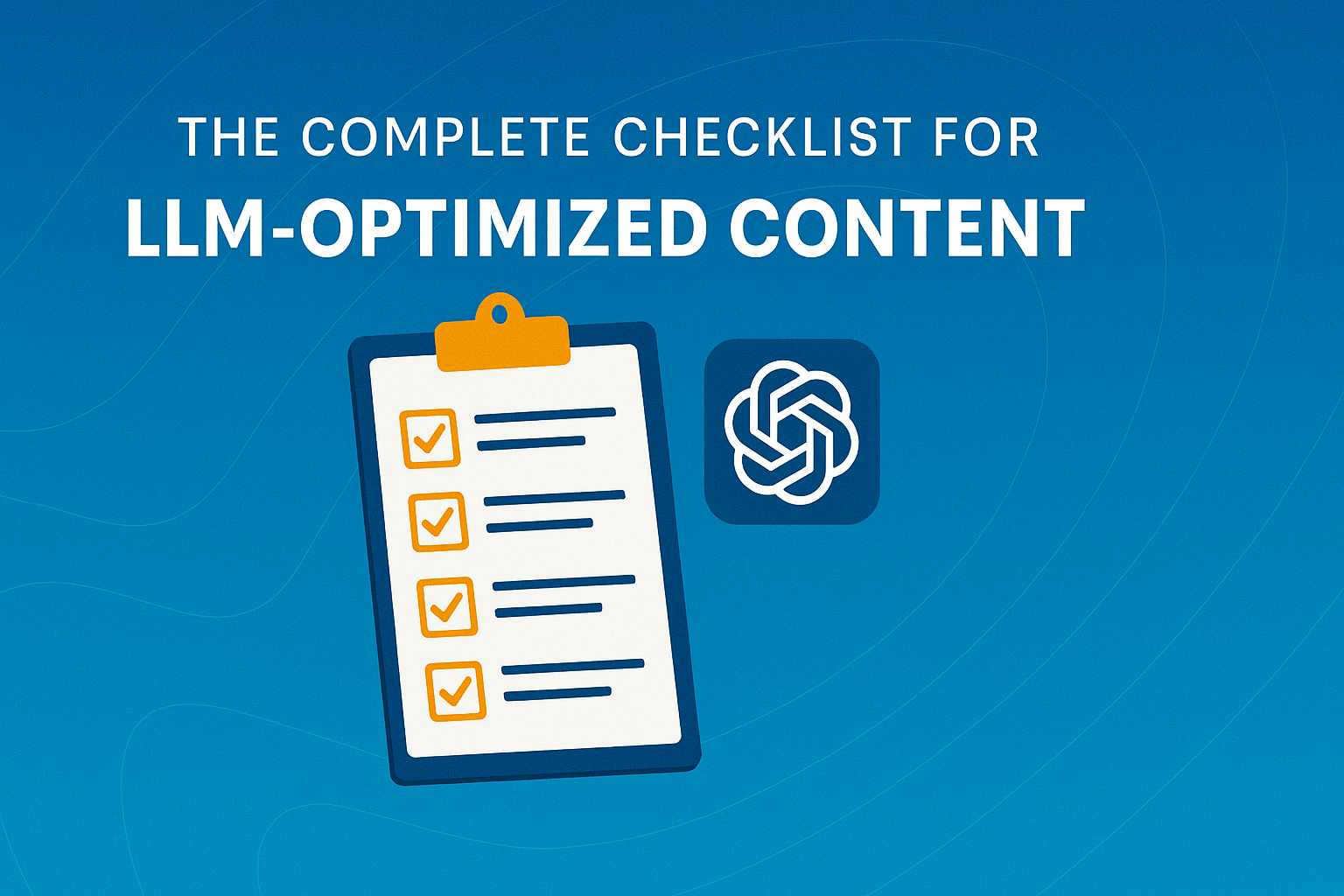LLM SEO Checklist for Blog Optimization

Optimizing blog content for both traditional search engines and Large Language Models (LLMs) requires a strategic approach that balances human readability with machine understanding. This comprehensive LLM SEO checklist will guide you through essential steps to ensure your blog posts rank well in search results and get cited by AI tools like ChatGPT, Claude, and Perplexity.
Technical SEO Foundation
| Element | Optimization Requirements |
|---|---|
| Meta Tags |
|
| URL Structure |
|
| Schema Markup |
|
Content Structure for LLM Understanding
- Clear Hierarchy: Use proper H1-H6 tags for content organization
- Semantic HTML: Implement article, section, and aside tags
- Descriptive Classes: Use meaningful class names for better parsing
- Content Blocks: Organize information in logical, self-contained sections
LLM-Specific Optimization Steps
- Create an llms.txt file with proper directives (see our Ultimate Guide to Creating an llms.txt)
- Implement structured data using Schema.org markup
- Define key terms early in the content
- Use factual statements that can be easily verified
- Include numerical data and statistics with sources
Content Quality Markers
Both search engines and LLMs prioritize high-quality content. Ensure your blog posts meet these criteria:
- Comprehensive Coverage: Address the topic thoroughly
- Original Insights: Provide unique perspectives or data
- Clear Examples: Illustrate concepts with practical examples
- Updated Information: Keep content current and accurate
- Authoritative Sources: Link to respected external references
Frequently Asked Questions
How is LLM SEO different from traditional SEO?
While traditional SEO focuses on keywords and backlinks, LLM SEO emphasizes semantic understanding, factual accuracy, and structured content organization. LLMs can understand context and relationships between concepts, making clear explanations and logical structure more important than keyword density.
Do I need separate content versions for search engines and LLMs?
No, well-structured content can serve both purposes. Focus on clarity, accuracy, and proper HTML semantics to make your content accessible to both search engines and LLMs.
How can I track if LLMs are citing my content?
Use tools like our MCP tracking system to monitor when and how often LLMs reference your content. This helps measure the effectiveness of your optimization efforts.
What's the most important factor for LLM optimization?
Content structure and factual accuracy are crucial. LLMs are more likely to cite content that presents information in a clear, structured format with verifiable facts and proper attribution.
Conclusion
Optimizing your blog for both search engines and LLMs doesn't have to be complicated. Follow this checklist to ensure your content is well-structured, informative, and citation-worthy. Remember to regularly review and update your content to maintain its relevance and accuracy.
Ready to optimize your content? Try our free LLM SEO Checker tool to evaluate your blog posts against these best practices.